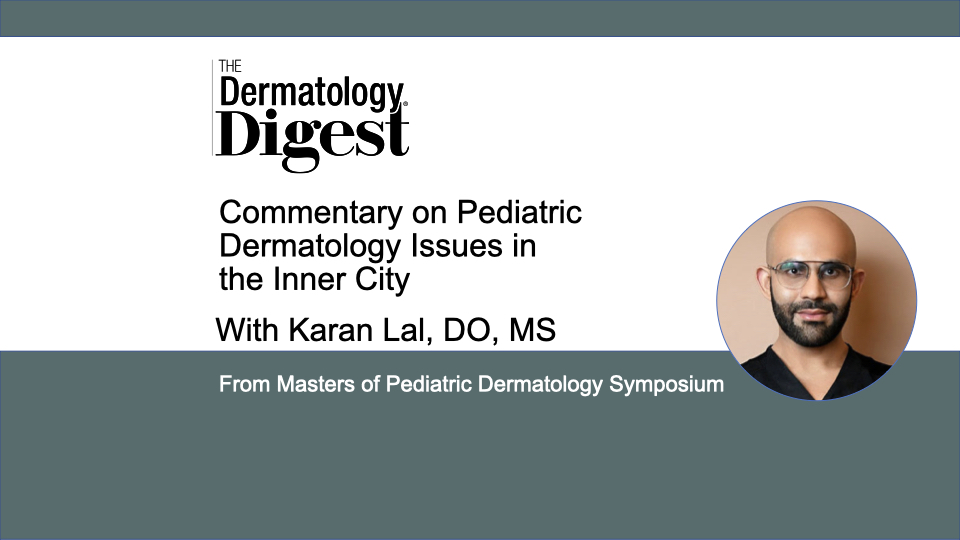Dr. Karan Lal discusses the pathway that links environmental pollutants to atopic dermatitis flares, as well as a potential therapeutic target and practical patient care.
Karan Lal, DO, MS, Board-Certified Pediatric Dermatologist, Affiliated Dermatology, Scottsdale, Arizona
“In the past few years, [pollution’s contribution to atopic dermatitis (AD)] has become a popular topic because we’re learning about different pathways in the skin that contribute to various phenotypes or presentations of eczema,” said Karan Lal, DO, MS, who presented on pollution and atopic dermatitis at the Masters of Pediatric Dermatology Symposium in Miami Beach, Florida.
“We learned recently with the forest fires in California that people with eczema, even those living outside of forest fire areas, were having eczema flares. It brought up this question as to why.”
According to Dr. Lal, the answer is the aryl hydrocarbon receptor (AhR) pathway.
“We’re learning that the Janus kinase/signal transducer and activator of transcription (JAK/STAT) pathway, which is targeted by a lot of different therapies, relies in part on the AhR pathway. Parts of this pathway not only help produce proteins that are responsible for the cell envelope in maintaining the skin barrier, but also play a role in promoting inflammation.”
Polyaromatic hydrocarbons, found in pollution, activate this pathway. And when activation happens, inflammation results, said Dr. Lal.
“Not only do polyaromatic hydrocarbons produce a lot of inflammation, but they also produce proteins involved in itch. So, we know pollutants directly induce pruritis or scratching in eczema patients, in part due to this pathway.”
A Therapeutic Target
Tapinarof (VTAMA, Dermavant) cream, approved for psoriasis, targets the AhR pathway. And while it is not approved for AD, it is being studied in AD, according to Dr. Lal.
“Specifically, I think it will be very good in those urban settings where there are a lot of pollutants. Because pollutants, believe it or not, don’t just sit on the skin. They actually are able to penetrate the cell membrane because they’re lipid soluble, making it hard to prevent those pollutants from getting into your skin. Now we have a potential target for treating the inflammation that comes from that type of pollution.”
Patient Care
Many AD patients want something to blame for their skin flares, said Dr. Lal.
“Now I can give people evidence.”
Smoking activates this pathway, as well. So now when patients are exposed to smokers in a household, Dr. Lal said he talks with the patient and family about how environmental smoke activates this pathway, potentially contributing to a child’s eczema.
Disclosure: Dr. Lal is a speaker for Incyte.


